- Service Table for Troubleshooting a Mahindra Tractor Won’t Start
- Check the Mahindra Tractor Battery
- How to Examine the Fuel Filter
- Ignition System Test Guide
- How to Inspect the Coolant Levels & Cooling System
- How to Test the Starter Motor & Solenoid
- Check the Engine Oil Level if a Mahindra Tractor Won’t Start
- How to Check the Air Filter if Your Tractor Won’t Start
- How to Verify All Tractor Safety Switches
- Mahindra Tractor Won’t Start FAQ
Having trouble getting your Mahindra tractor to start? Don’t worry, you’ve come to the right place for expert guidance. Troubleshooting tractor starting issues requires a keen eye for visual cues and an understanding of the various engine components that could be causing the problem, such as fuel system issues, battery-related issues, ignition problems, or faulty safety switches. In this guide, we’ll provide you with troubleshooting solutions, diagnose potential causes, and suggest appropriate replacements if needed. We’ll also delve into details like fuel consumption type, so you can get a comprehensive understanding of the problem at hand. So, let’s dive in and get your Mahindra tractor up and running again.
If you’re facing issues with your Mahindra tractor not starting, you’ve come to the right place for expert troubleshooting assistance. Whether it’s a lack of oil, power issues, or other factors affecting the starting process, we’ll guide you through the troubleshooting process.
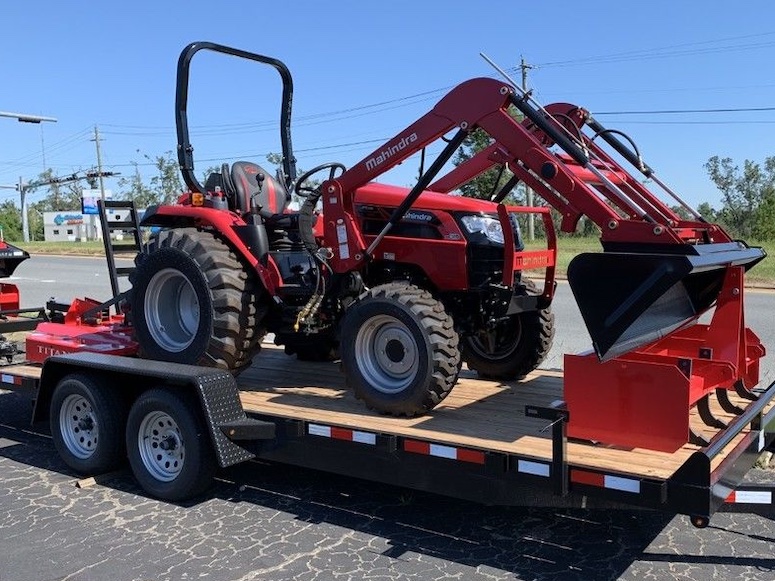
We understand the importance of getting your Mahindra tractor back up and running efficiently. Let’s embark on this troubleshooting journey together to uncover the cause of the starting issue and get your Mahindra tractor back to its optimal performance.
Service Table for Troubleshooting a Mahindra Tractor Won’t Start
Here’s a service table for troubleshooting a Mahindra tractor that won’t start:
| Service Steps | Description |
|---|---|
| Step 1: Check the Battery | – Inspect battery connections for corrosion or looseness. – Measure the battery voltage with a multimeter. – Charge or replace the battery if voltage is low or the battery is faulty. |
| Step 2: Verify Fuel System | – Ensure there is sufficient fuel in the tank. – Inspect the fuel filter for clogs and replace if necessary. – Check fuel lines for blockages or leaks. |
| Step 3: Inspect the Ignition System | – Examine spark plugs for cleanliness and proper gap. – Check ignition switch and wiring for faults. – Verify the ignition coil is functioning correctly. |
| Step 4: Check Safety Switches | – Inspect seat switch, brake switch, and other safety switches for proper engagement and functionality. – Repair or replace any faulty switches. |
| Step 5: Inspect Engine Components | – Check the air filter and clean or replace if clogged. – Verify engine oil level and top up if needed. – Examine the cooling system for leaks or malfunctions. – Test the starter motor and solenoid for proper operation. |
| Step 6: Seek Professional Help if Necessary | – If the above steps do not resolve the issue, consider consulting a qualified technician or Mahindra service center for further diagnosis and assistance. |
Please note that this service table provides general steps for troubleshooting a Mahindra tractor that won’t start.
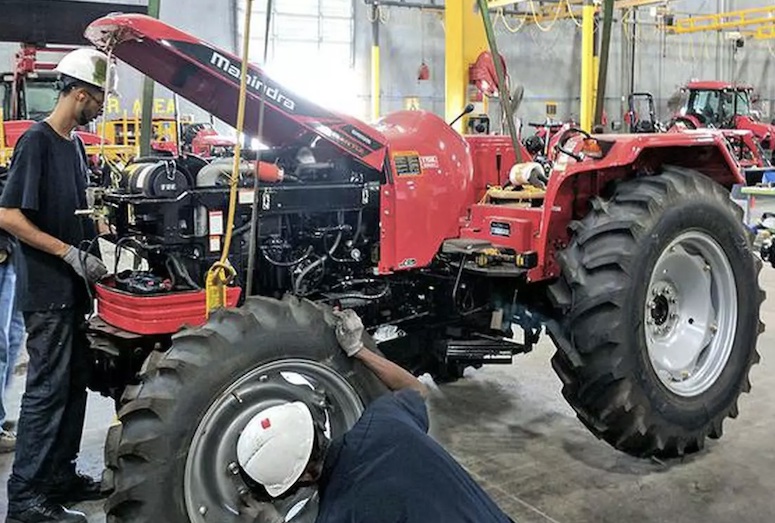
The specific steps may vary depending on the tractor model and other factors. Always refer to your tractor’s manual and follow manufacturer-recommended procedures for accurate troubleshooting and servicing.
Check the Mahindra Tractor Battery
Here is a step-by-step instruction on how to check the battery if your Mahindra tractor won’t start:
- Ensure safety: Make sure the tractor is parked on a flat surface, the engine is turned off, and the key is removed from the ignition to prevent any accidents.
- Locate the battery: Identify the location of the battery on your Mahindra tractor. Typically, it is located under the hood or near the engine compartment.
- Inspect battery connections: Check the battery terminals for any signs of corrosion, such as a white or greenish buildup. If corrosion is present, you’ll need to clean the terminals before proceeding.
- Clean battery terminals (if necessary): Mix a solution of baking soda and water to create a paste. Apply the paste to the battery terminals using a wire brush or a battery terminal cleaner tool. Scrub the terminals gently until the corrosion is removed. Rinse the terminals with clean water and dry them thoroughly.
- Check battery voltage: Using a multimeter, set it to the DC voltage setting and connect the positive (red) probe to the positive terminal of the battery and the negative (black) probe to the negative terminal. The multimeter should display the battery voltage. A fully charged battery should typically read around 12.6 volts or higher.
- Charge the battery (if necessary): If the battery voltage is below the recommended level, you’ll need to charge the battery. Connect a battery charger to the battery following the manufacturer’s instructions and let it charge until the battery reaches the optimal voltage.
- Test the battery (optional): If you suspect that the battery may be faulty, you can have it tested at an auto parts store or by a professional battery tester. They will check the battery’s overall health and provide you with a detailed report.
- Replace the battery (if necessary): If the battery fails the voltage test or shows signs of damage, such as bulging or leaking, it’s likely time for a replacement. Purchase a new battery of the same specifications as the original and install it according to the manufacturer’s instructions.
By following these steps, you can effectively check the battery of your Mahindra tractor and determine if it is the cause of the starting issue. Remember to prioritize safety and consult the tractor’s manual for any specific instructions or precautions related to your particular model.
How to Examine the Fuel Filter
Here is a step-by-step instruction on how to examine the fuel filter if your Mahindra tractor won’t start:
- Safety first: Ensure the tractor is parked on a flat surface, the engine is turned off, and the key is removed from the ignition to prevent any accidents. Also, make sure you have the necessary tools and materials for the task.
- Locate the fuel filter: Identify the location of the fuel filter in your Mahindra tractor. Typically, it is situated along the fuel line between the fuel tank and the engine. Consult your tractor’s manual if you’re unsure of the exact location.
- Prepare the area: Place a clean rag or towel beneath the fuel filter to catch any fuel that may spill during the examination process.
- Remove the fuel filter: Depending on the type of fuel filter, you may need to use a wrench or screwdriver to loosen the clamps or fittings securing it in place. Carefully disconnect both ends of the fuel filter and set it aside.
- Inspect the fuel filter visually: Examine the fuel filter for any signs of clogs, debris, or discoloration. A dirty or clogged fuel filter can prevent fuel from reaching the engine, leading to starting issues.
- Clean or replace the fuel filter: If the fuel filter appears dirty or clogged, you have two options. You can either clean the filter or replace it altogether.
- To clean the fuel filter, use compressed air or a soft brush to remove any dirt or debris. Be thorough in cleaning all the filter elements. Ensure there is no damage to the filter housing or any other components.
- If cleaning the filter does not improve the starting issue or if the filter is damaged, it is recommended to replace the fuel filter with a new one. Purchase a replacement filter that matches the specifications of the original.
- Reinstall the fuel filter: Once you have cleaned or replaced the fuel filter, reconnect it to the fuel lines and secure it tightly using clamps or fittings. Ensure the connections are secure to prevent any fuel leaks.
- Test the tractor: With the fuel filter back in place, try starting your Mahindra tractor to see if the issue is resolved. If it still won’t start, further troubleshooting may be required.
Remember to consult your tractor’s manual for specific instructions related to your model, as the location and procedure for examining the fuel filter may vary. Additionally, prioritize safety throughout the process, and if you are unsure or uncomfortable performing the task, it is best to seek assistance from a qualified professional.
Ignition System Test Guide
Here is a step-by-step instruction on how to inspect the ignition system if your Mahindra tractor won’t start:
- Safety precautions: Before you begin inspecting the ignition system, ensure that the tractor is parked on a level surface, the engine is turned off, and the key is removed from the ignition. Also, make sure you have the necessary tools and materials for the task.
- Locate the ignition components: Identify the key components of the ignition system in your Mahindra tractor. This typically includes the ignition switch, spark plug(s), ignition coil, and associated wiring.
- Check the ignition switch: Start by examining the ignition switch for any signs of damage, such as corrosion or loose connections. Ensure that the switch is in the “ON” position when attempting to start the tractor.
- Inspect the spark plug(s): Remove the spark plug wire(s) from the spark plug(s) by gently pulling on the rubber boot. Use a spark plug socket and ratchet to carefully remove the spark plug(s) from the engine cylinder(s). Inspect the spark plug(s) for any signs of fouling, such as carbon buildup or damage to the electrode. Clean or replace the spark plug(s) as necessary.
- Check the ignition coil: Locate the ignition coil, which is usually mounted near the engine. Inspect the ignition coil for any visible signs of damage, such as cracks or corrosion. Ensure that all the electrical connections to the ignition coil are secure.
- Inspect the wiring: Examine the wiring harness and connections associated with the ignition system. Look for any frayed or damaged wires, loose connections, or signs of corrosion. Repair or replace any faulty wiring as needed.
- Test the ignition system: Reconnect the spark plug wire(s) to the spark plug(s) and make sure they are securely attached. Crank the engine and observe if there is a spark at the spark plug(s). If there is no spark, the ignition system may be faulty and further troubleshooting may be required.
- Consult a professional if needed: If you are unable to determine the cause of the ignition system issue or if you are uncomfortable performing the inspection, it is advisable to seek assistance from a qualified technician or Mahindra tractor dealership for further diagnosis and repairs.
Remember to consult your tractor’s manual for specific instructions and safety guidelines related to your particular model. It is essential to prioritize safety throughout the inspection process, and if you are unsure or uncomfortable performing any task, seek professional assistance.
How to Inspect the Coolant Levels & Cooling System
Here is a step-by-step instruction on how to inspect the coolant levels and cooling system if your Mahindra tractor won’t start:
- Safety precautions: Before you begin inspecting the coolant levels and cooling system, ensure that the tractor is parked on a level surface, the engine is turned off, and the key is removed from the ignition. Allow the engine to cool down for a sufficient amount of time to prevent any burns or injuries.
- Locate the coolant reservoir: Open the tractor’s hood or engine cover and locate the coolant reservoir. The coolant reservoir is a translucent plastic container with markings indicating the minimum and maximum levels of coolant.
- Check the coolant level: Look at the coolant level in the reservoir. The coolant should be filled between the minimum and maximum markings. If the coolant level is below the minimum mark, it indicates a potential coolant loss or leak.
- Inspect the coolant condition: Observe the color and consistency of the coolant in the reservoir. Ideally, the coolant should have a bright, clear color. If the coolant appears dirty, rusty, or contains any debris, it may indicate contamination or the need for a coolant flush.
- Inspect the cooling system for leaks: Examine the hoses, radiator, water pump, and other components of the cooling system for any signs of leaks, such as visible coolant drips, wet spots, or white residue. Leaks can lead to a loss of coolant and cause the engine to overheat.
- Check radiator fins for blockage: Inspect the radiator fins located behind the radiator grille. Look for any accumulation of debris, dust, or insects that could block the airflow. Use a soft brush or compressed air to gently clean the radiator fins if necessary.
- Verify the radiator cap: Check the condition of the radiator cap. Ensure that the cap is tightly secured and in good working condition. A faulty radiator cap can lead to coolant loss and cause starting issues.
- Refill or top up coolant if needed: If the coolant level is low, add the appropriate coolant mixture to the reservoir until it reaches the recommended level. Use the coolant specified in your tractor’s manual and follow the manufacturer’s guidelines.
- Test the tractor: Once you have inspected the coolant levels and cooling system, attempt to start your Mahindra tractor to see if the issue is resolved. If it still won’t start, further troubleshooting may be required.
If you are unsure about inspecting the coolant levels and cooling system or if you suspect a more significant issue, it is recommended to seek assistance from a qualified technician or Mahindra tractor dealership for further diagnosis and repairs. Ensure to follow the safety guidelines and instructions provided in your tractor’s manual throughout the process.
How to Test the Starter Motor & Solenoid
Here is a step-by-step instruction on how to test the starter motor and solenoid if your Mahindra tractor won’t start:
- Safety precautions: Before you begin testing the starter motor and solenoid, ensure that the tractor is parked on a level surface, the engine is turned off, and the key is removed from the ignition. Also, make sure you have the necessary tools and materials for the task.
- Locate the starter motor and solenoid: The starter motor is typically mounted on the engine, while the solenoid is usually attached to the starter or located nearby. Refer to your tractor’s manual or consult a service diagram to identify the exact location of these components.
- Inspect the connections: Check all the electrical connections related to the starter motor and solenoid. Look for loose or corroded connections, damaged wires, or any signs of wear. Ensure that the connections are clean, tight, and free from debris.
- Test the battery: Start by checking the battery voltage using a multimeter. Connect the positive (red) lead of the multimeter to the positive terminal of the battery and the negative (black) lead to the negative terminal. A fully charged battery should read around 12.6 volts or higher. If the battery voltage is low, recharge or replace the battery as needed.
- Check the solenoid function: The solenoid is responsible for engaging the starter motor when the ignition key is turned. You can test the solenoid by using a jumper wire or screwdriver to bridge the two terminals on the solenoid. Be cautious and ensure that you are not in contact with any moving parts. If the solenoid clicks or makes a noticeable sound, it indicates that the solenoid is functioning properly. If there is no sound or response, the solenoid may be faulty and require replacement.
- Test the starter motor: If the solenoid clicks but the starter motor does not engage, it suggests a potential issue with the starter motor. To test the starter motor, use a jumper cable to connect the positive terminal of the battery directly to the terminal on the starter motor. Ensure that the tractor is in neutral and the parking brake is engaged. If the starter motor does not turn or makes unusual noises, it may be faulty and needs to be replaced.
- Consult a professional if needed: If you are unable to determine the cause of the starter motor or solenoid issue or if you are uncomfortable performing the testing, it is advisable to seek assistance from a qualified technician or Mahindra tractor dealership for further diagnosis and repairs.
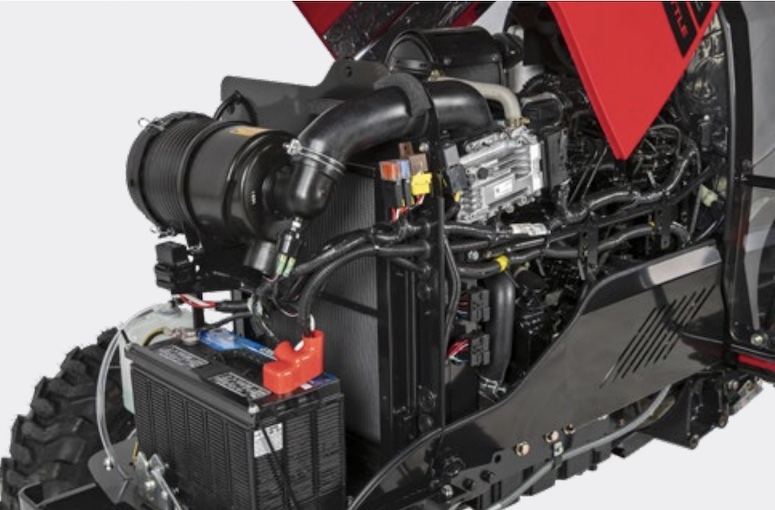
Remember to consult your tractor’s manual for specific instructions and safety guidelines related to your particular model. It is essential to prioritize safety throughout the testing process, and if you are unsure or uncomfortable performing any task, seek professional assistance.
Check the Engine Oil Level if a Mahindra Tractor Won’t Start
Here is a step-by-step instruction on how to check the engine oil level if your Mahindra tractor won’t start:
- Safety precautions: Before you begin, make sure the tractor is parked on a level surface and the engine is turned off. Also, ensure that the tractor has had sufficient time to cool down to avoid any risk of burns.
- Locate the engine oil dipstick: The engine oil dipstick is usually located near the engine block and has a brightly colored handle for easy identification. Refer to your tractor’s manual or consult a service diagram to locate the dipstick if you are unsure.
- Remove the dipstick: Firmly grip the handle of the dipstick and pull it out of the dipstick tube. Wipe the dipstick clean using a rag or paper towel to remove any existing oil.
- Insert the dipstick back in: After wiping the dipstick clean, fully insert it back into the dipstick tube. Ensure it goes all the way in until it is seated properly.
- Remove the dipstick again and check the oil level: Pull the dipstick out once more and observe the oil level. The dipstick usually has markings indicating the proper oil level range. It may have “Min” and “Max” markings or a crosshatched area between two lines. The oil level should be within this range.
- Check the oil condition: While examining the oil level, also observe the condition of the oil. It should be a clear amber color, indicating clean oil. If the oil appears dark, dirty, or has a milky appearance, it may be contaminated and require replacement.
- Add oil if necessary: If the oil level is below the minimum mark or below the recommended range, you will need to add oil. Refer to your tractor’s manual to determine the appropriate type and viscosity of oil to use. Slowly pour the oil into the oil fill port, taking care not to overfill.
- Recheck the oil level: After adding oil, repeat steps 3 to 5 to verify that the oil level is now within the recommended range.
- Securely replace the dipstick: Once you have finished checking the oil level and ensuring it is at the correct range, securely reinsert the dipstick back into the dipstick tube until it is properly seated.
Checking the engine oil level is an essential maintenance task that should be done regularly, even if the tractor won’t start. Proper oil level and condition are crucial for the engine’s performance and longevity. If you are unsure about the oil type, level, or any other aspect of the process, consult your tractor’s manual or contact a qualified technician for assistance.
How to Check the Air Filter if Your Tractor Won’t Start
Here is a step-by-step instruction on how to check the air filter if your Mahindra tractor won’t start:
- Safety precautions: Before you begin, ensure that the tractor’s engine is turned off and has had sufficient time to cool down. This will prevent any risk of burns or injuries.
- Locate the air filter housing: The air filter housing is typically situated near the engine and is enclosed with a cover. Consult your tractor’s manual or refer to a service diagram to locate the air filter housing if you are unsure.
- Remove the air filter housing cover: Depending on the design of the air filter housing, it may be secured with screws, latches, or clips. Carefully remove the fasteners or release the latches to open the housing cover.
- Inspect the air filter: Once the air filter housing cover is removed, you will see the air filter element inside. Take a close look at the filter for any signs of dirt, dust, debris, or damage. A clogged or dirty air filter can restrict airflow and affect the engine’s performance.
- Clean or replace the air filter: If the air filter appears dirty or clogged, it needs to be cleaned or replaced. If it is a washable filter, follow the manufacturer’s instructions to clean it. Typically, this involves gently tapping the filter to remove loose debris and rinsing it with water. Allow the filter to dry completely before reinstalling it. If the filter is not washable or is severely damaged, it should be replaced with a new one. Ensure you have the correct replacement filter suitable for your tractor’s model.
- Reinstall the air filter: Once the air filter has been cleaned or replaced, carefully place it back into the air filter housing. Ensure that it fits properly and aligns with any tabs or guides inside the housing.
- Secure the air filter housing cover: Align the cover with the housing and fasten it securely using screws, latches, or clips. Double-check that the cover is properly seated to prevent any unfiltered air from entering the engine.
Checking and maintaining a clean air filter is essential for the proper functioning of the engine. It ensures that clean air is supplied to the combustion chamber, optimizing fuel combustion and preventing potential damage. If you are unsure about the cleaning or replacement process, consult your tractor’s manual or seek assistance from a qualified technician.
How to Verify All Tractor Safety Switches
Here is a step-by-step instruction on how to verify all safety switches if your Mahindra tractor won’t start:
- Safety precautions: Before you begin, make sure the tractor’s engine is turned off, and the key is removed from the ignition. Ensure the tractor is parked on a flat surface and engage the parking brake for added safety.
- Locate the safety switches: Mahindra tractors are equipped with various safety switches that are designed to prevent the engine from starting in unsafe conditions. These switches may include the seat switch, PTO (power take-off) switch, and clutch switch. Refer to your tractor’s manual or a service diagram to identify the locations of these switches.
- Inspect the seat switch: The seat switch is typically located under the seat and is activated when you sit on it. Check if the seat switch is functioning properly by sitting on the seat and ensuring it is securely engaged. If the seat switch is loose or damaged, it may not provide the necessary contact for the tractor to start.
- Check the PTO switch: The PTO switch is usually located on the dashboard or control panel. This switch is responsible for disengaging the power take-off mechanism when starting the engine. Make sure the PTO switch is in the “Off” position before attempting to start the tractor.
- Test the clutch switch: The clutch switch is located near the clutch pedal and is designed to prevent the engine from starting unless the clutch is fully depressed. Press the clutch pedal all the way down and verify that the clutch switch is engaged. If the switch is not making proper contact or is damaged, it may prevent the engine from starting.
- Verify other safety switches: Depending on the specific model and features of your Mahindra tractor, there may be additional safety switches to inspect. These may include switches related to the parking brake, hydraulic levers, or other safety mechanisms. Refer to your tractor’s manual for a comprehensive list and their respective locations.
- Repair or replace faulty switches: If any of the safety switches are found to be faulty or damaged, they may need to be repaired or replaced. Consult your tractor’s manual or contact a qualified technician for guidance on the specific replacement procedure for each switch.
Verifying all safety switches is crucial to ensure that the tractor starts safely and operates as intended. These switches are designed to protect you and your equipment from potential hazards. If you are unsure about the inspection or replacement process, it is recommended to seek assistance from a qualified technician.
Mahindra Tractor Won’t Start FAQ
Here’s an FAQ section for Mahindra tractor won’t start:
Q: Why won’t my Mahindra tractor start?
A: There can be several reasons why your Mahindra tractor won’t start. Common causes include a dead battery, fuel system issues, ignition system problems, safety switch malfunctions, or low engine oil level.
Q: How can I determine if the battery is causing the starting issue?
A: To check the battery, inspect its terminals for corrosion and ensure they are securely connected. Measure the battery voltage using a multimeter. If the voltage is low (below 12 volts), it may indicate a weak or dead battery that needs recharging or replacement.
Q: What should I do if the fuel filter is clogged?
A: If you suspect a clogged fuel filter, locate the filter and visually inspect it for any signs of blockage or debris. Replace the filter if necessary, following the manufacturer’s instructions. Ensure proper fuel flow by priming the system after replacing the filter.
Q: How can I troubleshoot the ignition system?
A: Start by checking the spark plug. Remove it and inspect for fouling, damage, or worn electrodes. Clean or replace the spark plug as needed. Also, check the ignition coil for proper connection and functionality. Ensure the wiring connections are secure.
Q: Why is it important to inspect the coolant levels and cooling system?
A: Low coolant levels or a malfunctioning cooling system can cause the engine to overheat, leading to starting issues. Regularly check the coolant reservoir and radiator to ensure they are filled to the appropriate level. Inspect for any leaks or clogs in the cooling system.
Q: What safety switches should I verify if my Mahindra tractor won’t start?
A: You should verify the seat switch, PTO switch, clutch switch, and any other safety switches specific to your tractor model. Make sure these switches are properly engaged and functioning as intended.
Q: How often should I check the engine oil level?
A: It is recommended to check the engine oil level before each use or at least once a week. This ensures that the engine has sufficient lubrication for proper operation. Follow the manufacturer’s guidelines for the correct oil type and filling procedure.
Remember, if you are unable to diagnose or resolve the issue on your own, it is recommended to consult a qualified technician or contact the Mahindra customer support for further assistance.
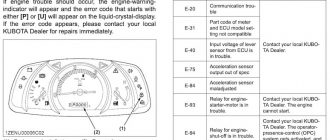


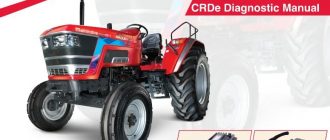


What can cause a malfunctioning starter motor?
A faulty starter motor can be caused by various issues such as a loose connection, worn-out starter gear, or a bad solenoid. Check for any loose wiring connections, inspect the starter gear for signs of wear, or have a professional check the solenoid if necessary.
What should I do if the battery is dead?
If the battery is dead, you can try jump-starting the tractor using jumper cables and a separate power source like another vehicle. Alternatively, recharge the battery using a battery charger. If the battery does not hold a charge, it may need to be replaced.
How can I prevent my Mahindra tractor from not starting again in the future?
Regular maintenance and inspections are essential to prevent starting issues. Ensure that the battery is adequately charged, clean the battery terminals regularly, and keep the fuel system clean by using clean fuel and changing filters regularly. Promptly addressing any issues with the ignition switch or starter motor can also help prevent starting problems.
Mahindra 4010 fires up then dies immediately as maybe fuel blockage so undid filter bowl removed filter and cleaned bowl and replaced to no effect – what next?
1. Check the Fuel Lines: Inspect the fuel lines for any signs of damage, kinks, or blockages. Make sure there are no leaks in the fuel lines as well. Replace any damaged or kinked lines.
2. Check the Fuel Tank: Make sure there is an adequate supply of fuel in the tank. Sometimes, low fuel levels can cause fuel starvation issues.
3. Air in the Fuel System: Air in the fuel system can cause starting and stalling problems. Check for any air leaks in the fuel lines or around the fuel filter. Tighten all connections to ensure there’s no air entering the system.
3. Fuel Pump Check: The fuel pump may not be delivering fuel properly. Check the fuel pump for any issues, and if necessary, have it serviced or replaced.
4. Water in Fuel: Water contamination in the fuel can also cause stalling. Drain any water from the fuel system by using the water drain valve if your tractor is equipped with one.
5. Injector Issues: If the problem persists, it’s possible that there may be an issue with the fuel injectors. Injectors may need cleaning, testing, or replacement by a qualified technician.